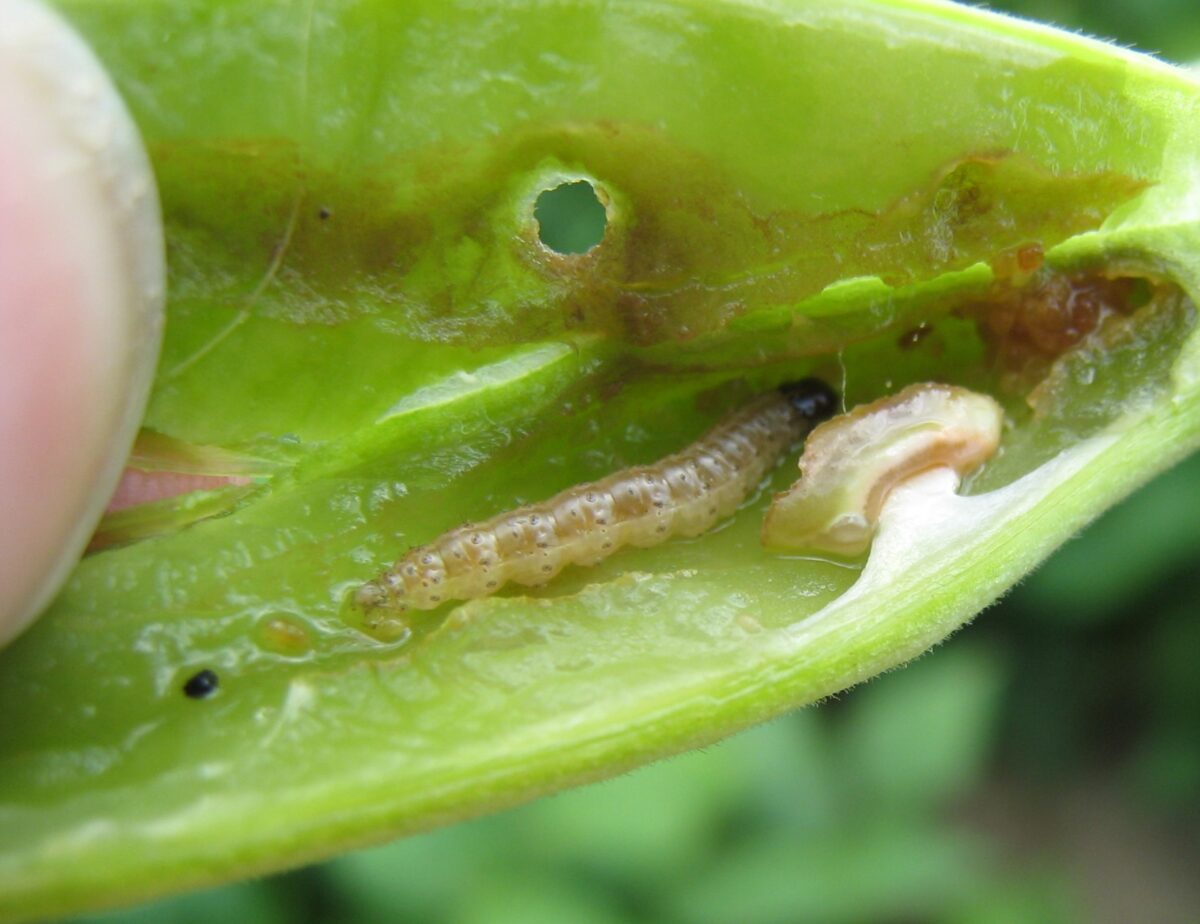Photo credit: Tracey Baute
European Corn Borer (Ostrinia nubilalis)
Description
European corn borer (ECB) egg masses are fat, creamy white and layered over each other, making the egg mass appear similar to fish scales. Mature larvae are creamy white to pale grey with two small spots per abdominal segment, approximately 2.5 cm (1 in.) in length and have a black head. Adults are light-brown moths approximately 2 cm (0.8 in.) long with dark wavy lines running across each forewing similar to an echocardiogram. Male moths are darker and smaller than females.
Life Cycle
There are two distinct strains in Ontario. South of a line from Sarnia to Simcoe, a bivoltine strain can undergo multiple generations (typically two), depending on the length of the season. North of this line, a univoltine strain has only one generation per year. There is a band of overlap for these two strains, about 50–80 km wide along this line. The insect overwinters as larvae in corn stalks and other residue left on the surface from the previous growing season. As day-length increases and average day temperatures exceed 10°C, the larvae pupate. Pupae are found within larval feeding tunnels and require 2 weeks to develop before adults emerge. While emergence begins around the third week of May in the southernmost regions of the province, moths do not usually appear until mid-June in eastern Ontario.
Once moths emerge, they fly to nearby “action sites” or vegetative habitats, such as fencerows, ditches and hedgerows along fields. Once mated, females leave the action sites to lay eggs on the host crop. Eggs are generally laid on the underside of corn leaves, close to the midrib. Where univoltine ECB are present, larvae develop through the season until autumn, when as fifth instars they prepare for overwintering. Where bivoltine ECB are present, first-generation larvae will pupate in mid-summer, emerge as adults and complete a second generation before entering diapause in the fall.
Damage and Scouting
European corn borer larvae can occasionally be found feeding inside dry edible bean pods, though the incidence is rare. Larvae create entry holes in the pod and feed on the developing seed. Unlike Western bean cutworm, they remain inside the pod and can be found feeding inside during the day. Entry holes promote the development of pod diseases.
Assess pods on 20 plants in five areas of the field. Avoid the field edge. Determine the number of pods with feeding injury. Use foliar insecticides if pod injury is common. Spot treatments may be effective if injury is concentrated to one area of the field.
